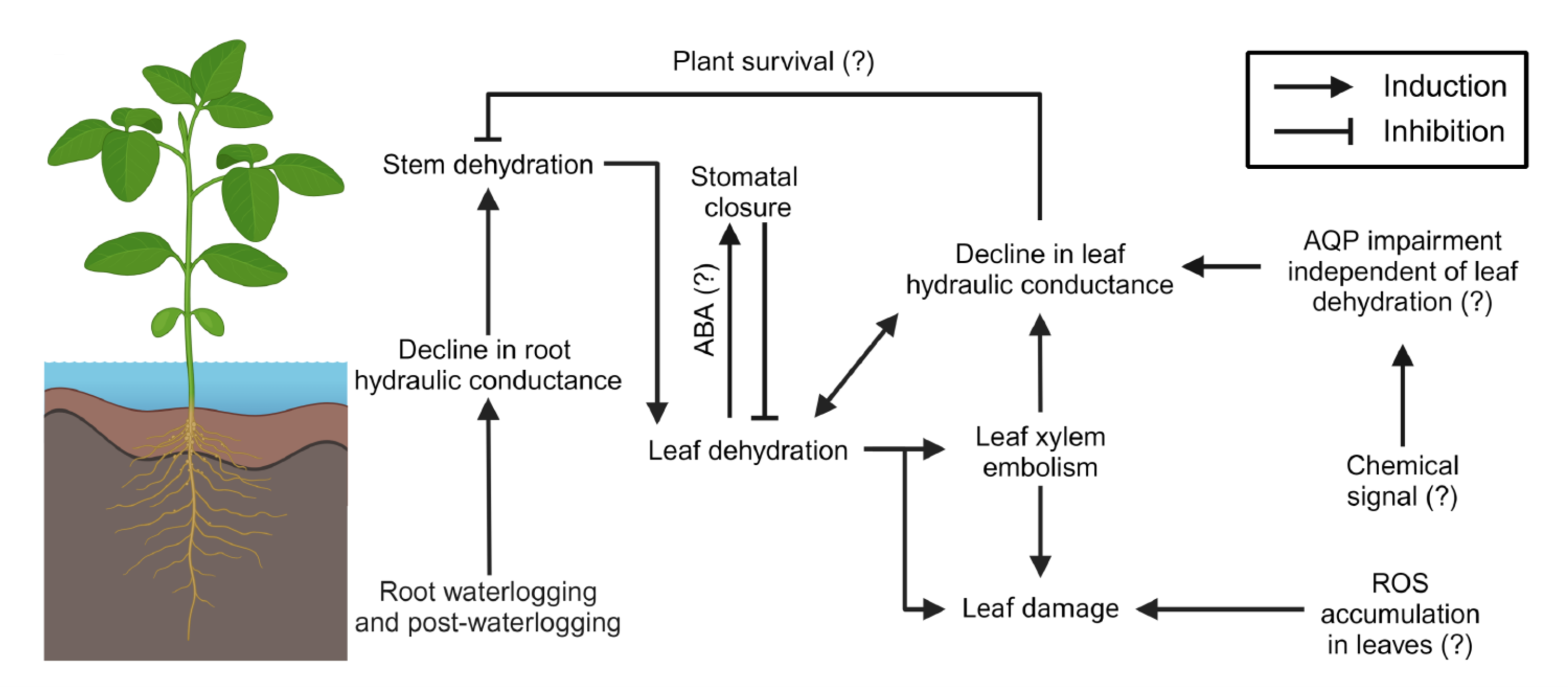Shoot impairments upon root waterlogging
 In this article by Haverroth et al., the authors explore plant-water dynamics in the shoot during and after waterlogging, using as a model Phaseolus vulgaris, which is particularly sensitive to waterlogging. One of the interesting findings is that early after waterlogging and prior to leaf dehydration, stomatal pores close and leaf hydraulic conductivity declines; the stomatal closure may be a response to increased ABA levels. Additionally, the early decreases in leaf hydraulic conductance are likely due to a downregulation of aquaporin expression, such as previously observed in roots. After soil drainage, leaf hydraulic conductance continues to decrease, leading to embolism formation, dehydration, and cell damage. The authors suggest that the decrease in hydraulic conductance in leaves acts as a “circuit breaker” to protect the stem from embolism formation, which is much more likely than leaf damage to cause plant death. (Summary by Mary Williams @PlantTeaching) Plant Physiol. 10.1093/plphys/kiae336
In this article by Haverroth et al., the authors explore plant-water dynamics in the shoot during and after waterlogging, using as a model Phaseolus vulgaris, which is particularly sensitive to waterlogging. One of the interesting findings is that early after waterlogging and prior to leaf dehydration, stomatal pores close and leaf hydraulic conductivity declines; the stomatal closure may be a response to increased ABA levels. Additionally, the early decreases in leaf hydraulic conductance are likely due to a downregulation of aquaporin expression, such as previously observed in roots. After soil drainage, leaf hydraulic conductance continues to decrease, leading to embolism formation, dehydration, and cell damage. The authors suggest that the decrease in hydraulic conductance in leaves acts as a “circuit breaker” to protect the stem from embolism formation, which is much more likely than leaf damage to cause plant death. (Summary by Mary Williams @PlantTeaching) Plant Physiol. 10.1093/plphys/kiae336






